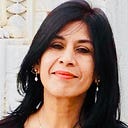Sri Lanka’s protesters are demanding change: here’s why
Sri Lanka’s president Gotabaya Rajapaksa has fled the country after weeks of protests. Now Sri Lankans want action — and fast
Days after ordinary Sri Lankans stormed the security barricades at their president’s official residence to force his resignation, the island nation of 22 million is holding its collective breath amid the worst economic crisis in its history.
Beleaguered president Gotabaya Rajapaksa, 73, fled by military plane to the Maldives overnight, throwing into disarray plans for his promised resignation which had been scheduled for today.
The office of prime minister Ranil Wickremesinghe declared a state of emergency. Wickremesinghe, a veteran politician who was sworn into office just eight weeks ago had also said he would resign. But he has been appointed acting president by the fleeing president. Meanwhile, the main opposition leader, Sajith Premadasa, has said he will run for president as well as support an all-party government.
If all goes to plan, Sri Lanka’s 225-member parliament will vote on 20 July to elect a new president and end 20 years of the Rajapaksa political dynasty’s dominance.
The new administration will have to submit a debt restructuring plan to the International Monetary Fund (IMF) in August, in order to agree a bailout package for the worst economic crisis in 74 years of independence. Sri Lanka is bankrupt, without foreign currency to pay for fuel, food imports and fertiliser. The World Food Programme estimates that 86% of Sri Lankans are having to skip meals or take other measures to cope with the crisis.
Last Saturday, the British colonial-era presidential mansion was transformed into the people’s palace, with crowds ascending sweeping staircases, lolling on four-poster beds, strolling the manicured lawns and merrily splashing about in the swimming pool.
Television footage beamed around the world showed chaotic scenes but protestors and pundits alike in Sri Lanka paint a very different picture. University of Colombo political scientist Jayadeva Uyangoda told openDemocracy (oD) that 9 July marked “a ‘democratic revolution’ or a ‘people’s revolution for democracy’, or even a ‘democratic revolution from below’.”
oD spoke to some protestors about their hopes and fears for their island home.
Read on at https://www.opendemocracy.net.
“If you analyse the politics of Sri Lanka, it was this regime that played one against the other — Sinhalese, Tamil, Muslim. On 9 July, we were one people. Let politics not come between us.”
“We didn’t have anything to eat or drink, so eventually we left and walked the seven kilometres home. We feel that we have achieved our objectives to some extent. Now let’s see what happens.”
“I am Sinhalese and when I was young we were told to look at the Tamils in a different way. But on 9 July, I saw Tamils joining in. We were all one people, there were no divisions…”
“I was glad then that we had chased these so-called leaders out of these palaces. We managed to show them that the people are stronger than armies, security guards and high walls. They have stolen from us and brought us to this — our rich country is poor and can’t even feed itself.”
Read on at https://www.opendemocracy.net.
